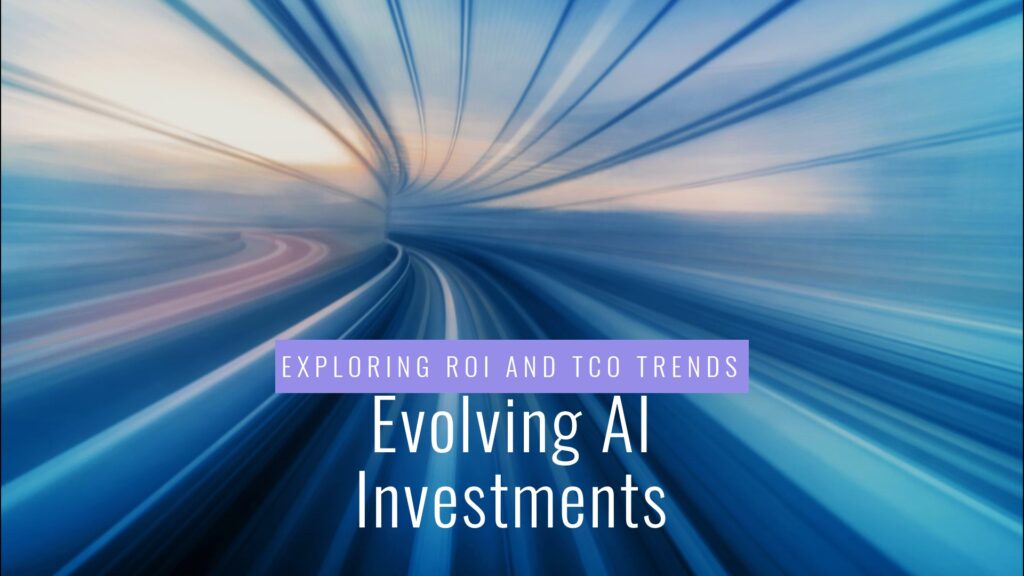
When I first wrote about justifying AI investments in my book, I focused on how businesses could calculate Return on Investment (ROI) and Total Cost of Ownership (TCO) to make a strong business case for AI adoption. The foundation of these calculations still holds, but in the past few years, AI technology has evolved significantly—bringing new opportunities, new challenges, and new strategies for business leaders looking to maximize their AI investments.
In this article, I’ll revisit the core principles I outlined in my book and share everything I’ve learned since then—how businesses can rethink AI justification, leverage new tools, and take a strategic approach to AI adoption in today’s fast-moving landscape.
Top 3 Key Takeaways
1️⃣ AI Justification Has Shifted Beyond Cost Savings – Businesses must now measure AI’s impact on revenue growth, competitive advantage, and innovation, not just efficiency gains.
2️⃣ TCO Now Includes Data, Security, and Governance Costs – Hidden costs such as model retraining, compliance, and cybersecurity risks must be factored into AI investment decisions.
3️⃣ AI is a Business Strategy, Not Just a Technology – Success comes from aligning AI with business goals, starting small, iterating, and securing leadership buy-in for long-term value.
What Has Changed in AI Investment Strategies?
AI has moved beyond niche automation and pilot projects—companies are now embedding AI into core business strategies. Here’s what’s different today:
– AI is More Accessible: Cloud-based AI services and low-code/no-code platforms lower barriers to entry.
– AI is More Powerful: Large language models (LLMs) and generative AI are changing how businesses approach decision-making and automation.
– ROI Metrics Have Shifted: Businesses are looking at AI not just for cost savings but for revenue generation and competitive advantage.
– TCO Factors Have Expanded: Data privacy, model retraining, and ethical AI governance now play a bigger role in total AI ownership costs.
Let’s explore how these shifts impact the ROI and TCO models I originally wrote about.
Revisiting ROI: Moving Beyond Cost Savings
In my book, I described how businesses could calculate AI ROI using a simple formula:

While this approach still applies, here’s what I’ve learned:
✅ Beyond Efficiency Gains: ROI must now include new revenue streams enabled by AI, such as personalized customer experiences and predictive analytics.
✅ AI as a Competitive Differentiator: Businesses leveraging AI for faster decision-making and automation are seeing exponential value creation.
✅ Measuring AI’s Contribution to Innovation: AI isn’t just about cost-cutting—it’s about making businesses more agile and future-proof.
Updated ROI Considerations:

💡 Takeaway: AI justification today is not just about efficiency—it’s about transformation. Companies that frame AI as a revenue enabler rather than just a cost-saver gain stronger buy-in from executives.
Reevaluating TCO: The Hidden Costs of AI
In my book, I outlined a basic Total Cost of Ownership (TCO) model for AI projects, considering:
– Direct Costs: Cloud services, data storage, computing resources.
– Implementation Costs: Development, integration, training.
– Maintenance Costs: Model retraining, software updates, security.
What’s different today? AI TCO has expanded to include new categories:
1️⃣ Data Costs: AI models require ongoing high-quality training data, which incurs sourcing, storage, and compliance costs.
2️⃣ Model Monitoring & Retraining: AI systems degrade over time—ongoing monitoring, bias detection, and retraining add to operational expenses.
3️⃣ AI Governance & Compliance: With increased scrutiny around AI ethics, businesses must invest in responsible AI practices, adding legal and regulatory costs.
New TCO Considerations for 2025:
– AI sustainability: Cloud-based AI has an energy footprint that companies are being asked to account for.
– Security and risk management: AI models introduce new cybersecurity vulnerabilities.
– Scalability: AI solutions need to be adaptable as business needs evolve.
💡 Takeaway: AI investments require long-term ownership planning. Companies must move beyond just calculating initial costs and think about sustained value creation.
A New AI Justification Framework for Business Leaders
To help executives make smarter, more future-proof AI decisions, here’s an updated AI Justification Framework for 2024:
✅ Step 1: Define Business Outcomes Before AI Implementation
– Tie AI use cases to specific business goals, not just tech capabilities.
– Example: Instead of ‘We need AI to automate customer support,’ say ‘Reducing response times by 40% will increase retention and drive $2M in additional revenue.’
✅ Step 2: Use Expanded ROI Models
– Consider both direct financial ROI (cost savings, revenue growth) and indirect ROI (competitive edge, innovation).
– Leverage new AI-powered analytics tools to track business impact more accurately.
✅ Step 3: Build a Comprehensive TCO Analysis
– Account for hidden costs, including ongoing data requirements, security risks, and compliance challenges.
– Develop a long-term AI sustainability plan to ensure continued value.
✅ Step 4: Start Small & Iterate
– Pilot AI in controlled environments before scaling company-wide.
– Implement A/B testing and real-time performance monitoring.
✅ Step 5: Secure Stakeholder Buy-In
– Align AI strategy with C-suite priorities.
– Use data-driven storytelling to demonstrate AI’s transformative power.
Final Thoughts: AI Isn’t Just an Investment—It’s a Competitive Necessity
In my book, I focused on how to calculate the value of AI—and while those principles still apply, we now have better insights, more advanced tools, and a stronger understanding of AI’s impact on business strategy.
Today, the best AI investments are those that:
✔️ Deliver measurable ROI beyond just cost savings.
✔️ Have a long-term strategy for maintaining and optimizing AI.
✔️ Are built around business transformation, not just automation.
💡 Want to learn more? Check out my book for the original AI justification framework here: https://a.co/d/9d0VjkL
💬 What’s your biggest challenge in justifying AI investments? Let’s discuss in the comments!
#AI #ROI #TCO #DigitalTransformation #AIInvestment #BusinessStrategy #ChrisSeferlis
